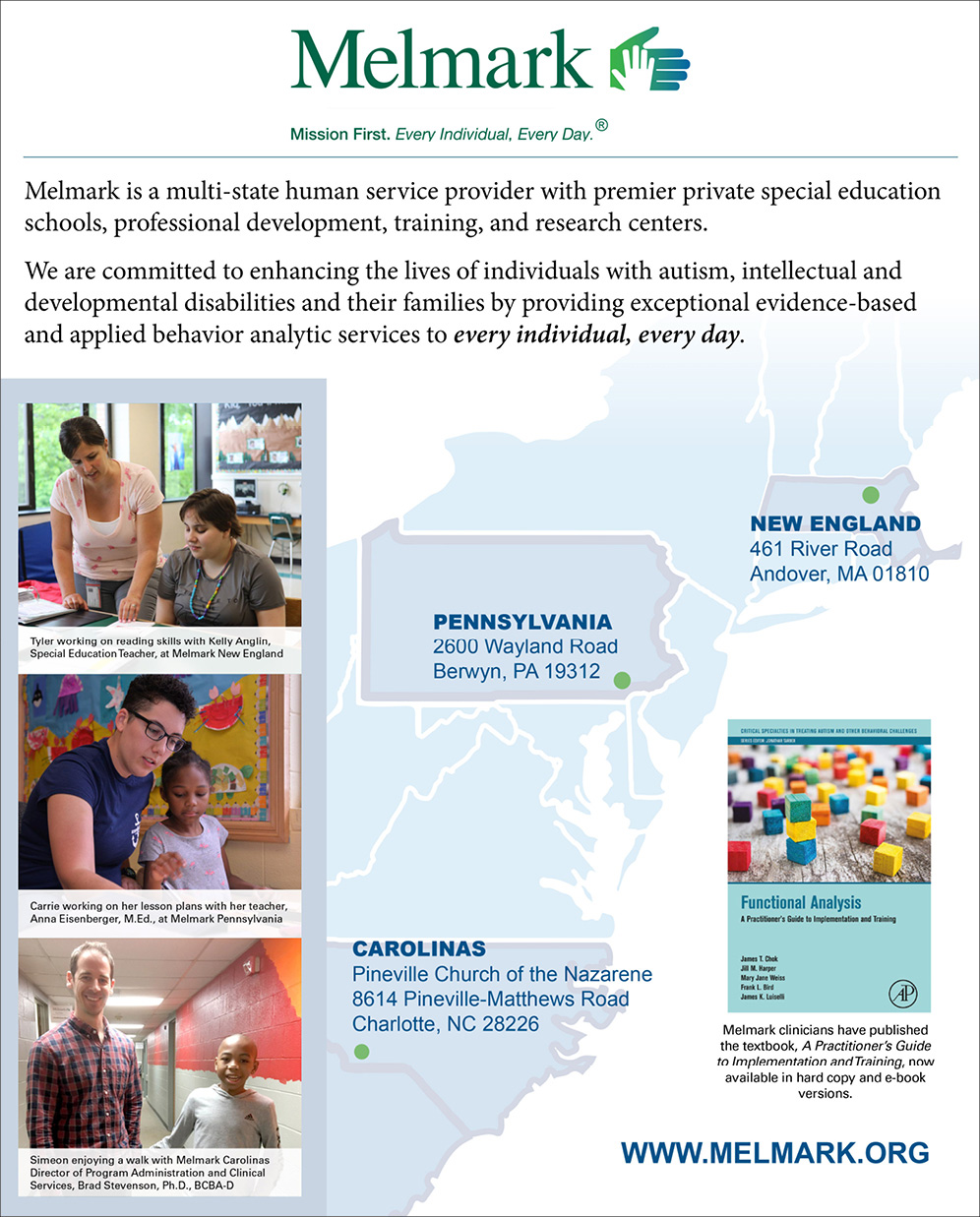It was not long ago that individuals with intellectual and developmental disabilities were cared for in settings quite separate and isolated and were deprived of full integration into their communities. Thankfully, in recent decades, the entitlement to community living and learning opportunities has become clear, and the integration of individuals with intellectual and developmental disabilities into their communities has steadily improved. Still, much work remains in understanding what components of community involvement matter, in identifying how to enhance these opportunities, in understanding how to increase community acceptance, and in ensuring that individuals with disabilities experience the full range of community immersion experiences.

Young volunteers outdoors planting trees in the community
Individuals with disabilities deserve to become an integral part “of” their communities, and not just go on outings “in” their communities. A goal for community living and full integration should be to achieve meaningful joining with the community, and to ensure that the integration is multidimensional and includes a wide range of activities that enhance quality of life. Ideally, individuals should be engaged in the community not just for errands and essential tasks, but for leisure activities, volunteer events, employment, and social activities. For example, individuals should be encouraged to the extent possible to participate regularly in various activities offered by the local YMCA, church, or community center. Additionally, individuals should be encouraged to participate in neighborhood activities and events, and when possible, get to know and have regular engagement with their neighbors. Activities for engagement can be geared towards individuals’ various likes and preferences, which may differ amongst individuals.
Individuals should also have outreach and maintain connections with their local community liaisons, police officers and community figures. This, in turn, will help individuals with disabilities build meaningful and sustainable relationships with people who are not paid to care for them. Finally, to the extent possible, individuals with disabilities should be given ongoing choices of what community activities they want to be a part of including their level of involvement. This gives them more control over their life and also increases their overall independence and satisfaction.
Community Integration and Quality of Life
Community inclusion and engagement are closely related to the concept of quality of life, which has also been increasingly discussed as an essential outcome for individuals with disabilities. Quality of life is difficult to define, but is related to the individual’s capacity for contacting fulfillment and joy in everyday pursuits (Ayres et al, 2016; Biggs & Carter, 2017; Parsons et al, 2012). Experiential components that impact quality of life include: housing, employment, leisure interests, and social connections (Schalock, Bonham & Marchand, 2000). Fortunately, there is some agreement on which elements of quality of life are most important (e.g., Bramston, Pretty, & Chipuer, 2002; Plimley, 2007). These include:
- Emotional well-being, often considered synonymous with happiness
- Social well-being, associated with connection, engagement, and relationships
- Physical well-being, associated with general health, level of physical activity, and overall wellness
- Self-determination, as evidenced by the degree of control and choice
- Social inclusion, as indicated by community immersion and engagement
- Personal development, focused on skill development and the attainment of independence
- Personal rights, including the preservation of dignity
It is interesting to look at this list in the context of community engagement and inclusion. High levels of community engagement lead directly to these indices of quality of life, allowing for social inclusion, enhancing social well-being, and increasing happiness. Being a true part of one’s community also provides for many more opportunities for choice, control, independence, and self-determination.
In addition, meaningful, sustained community engagement provides for much more embedded instruction, as individuals can learn tasks and navigate environments naturally, in real contexts. This is a strong advantage over historic reliance on teaching skills in analog settings, where generalization to the natural environment is always a concern. Indeed, as more community-based instruction can occur in situ, much less generalization training needs to be conducted. Instruction can be more efficient, effective, and overall enriching.
Community-based instruction also allows for the provision of more specific supports embedded into the community, to create the scaffolded support needed to help the individual succeed. This is a significant advantage over the provision of external supports, and allows for naturally available supports to be provided. Recent explorations of contexts, in which individuals with autism succeed as employees, point to several factors including an increased level of the community’s understanding of autism and the provision of supports within the environment (Dreaver et al, 2020). These supports might be tangible (e.g., visual supports), social (e.g., frequent informal check ins), or formal (e.g., presence of a coach). These same themes of increasing community members’ understanding of autism and individuals with intellectual disabilities and providing multiple environmental supports can enhance success in any community integration context, and can increase the overall success of immersion in community activities.
Dreaver et al (2020) discuss the importance of “match” between the individual and place and/or type of employment, and this concept can be extended to all aspects of community integration. Indeed, individualizing tasks, activities, and environments that are best aligned with an individual’s preferences leads to more success, whether it is a leisure or an employment context. Successful employment experiences also benefit the individual with disabilities in obvious ways, building their skills and confidence, and increasing their quality of life. It also benefits the employer, and the other individuals who work at that site, widely impacting the broader community and creating a diverse and inclusive environment for all.
Summary
The involvement in all aspects of community living serves as a critical quality of life indicator in a variety of ways for those with intellectual and developmental disabilities. This involvement also enriches the community as a whole.
All human beings should have the opportunity to pursue relationships, employment, and preferred leisure activities. Individuals with disabilities are no exception to this, and when provided with individualized support(s), they can be successful. When a person’s dignity is promoted and care is shown for their well-being, their chance for happiness is increased as is their independence with future undertakings. The level of fulfillment and happiness that can be obtained within the community setting for those individuals can be paramount to their success in all areas of their life.
Karen Parenti, MS, Psy.D, is Senior Director of Program Quality Assurance and Family Services for Melmark PA. Krystina Cassidy, MSEd is Director of Melmark PA’s Children’s Residential Homes. Kimberly Duhanyan, MEd, BCBA, LABA, is Senior Director of Residential Services for Melmark NE. Mary Jane Weiss, PhD, BCBA-D, is Senior Director of Research at Melmark. For more information, please visit www.melmark.org.
References
Ayres, M., Parr, J. R., Rodgers, J., Mason, D., Avery, L., & Flynn, D. (2017). A systematic review of quality of life of adults on the autism spectrum. Autism, 1362361317714988.
Bramston, P., Pretty, G., & Chipuer, H. (2002). Unravelling subjective quality of life: An investigation of individual and community determinants. Social Indicators Research, 59(3), 261-274.
Biggs, E. E., & Carter, E. W. (2016). Quality of life for transition-age youth with autism or intellectual disability. Journal of autism and developmental disorders, 46(1), 190-204.
Dreaver et al 2020. Success factors enabling employment for adults on the autism spectrum from the employer’s perspective. Journal of Autism and Developmental Disorders, 50, 1657-1667.
Parsons, M. B., Reid, D. H., Bentley, E., Inman, A., & Lattimore, L. P. (2012). Identifying indices of happiness and unhappiness among adults with autism: potential targets for behavioral assessment and intervention. Behavior analysis in practice, 5(1), 15-25.
Plimley, L. A. (2007). A review of quality of life issues and people with autism spectrum disorders. British Journal of Learning Disabilities, 35(4), 205-213.
Schalock, R. L., Bonham, G. S., & Marchand, C. B. (2000). Consumer based quality of life assessment: A path model of perceived satisfaction. Evaluation and program Planning, 23(1), 77-87.










